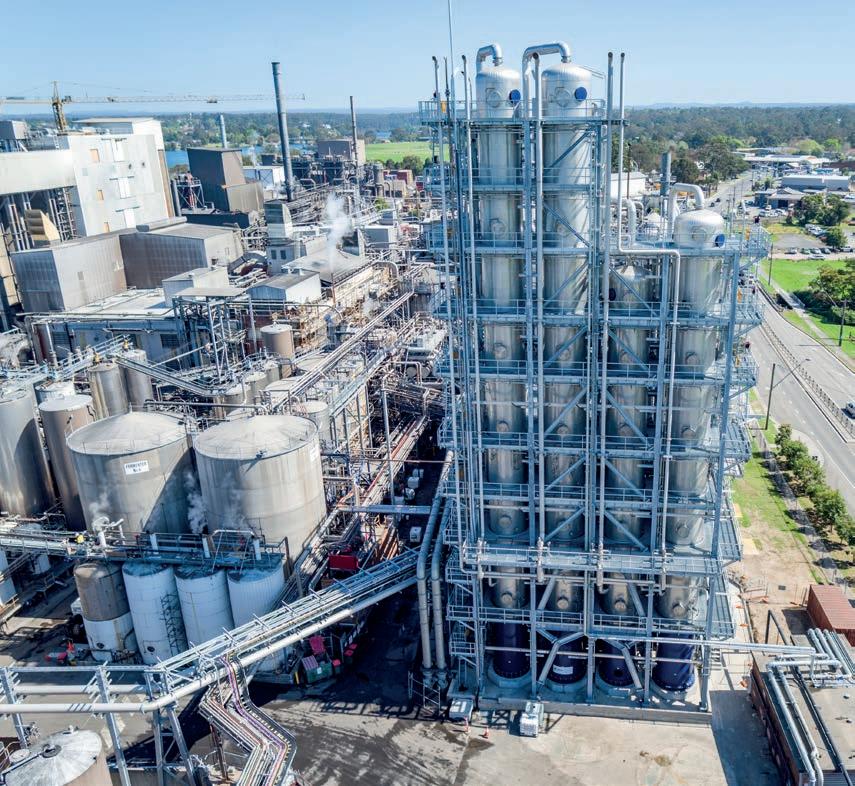Australia
ENERGY TRANSITION
D
evelopment of Australia’s biofuels and bioenergy sector has been hampered by the COVID-19 pandemic. There has also been some diversion of effort into research and development of green hydrogen from renewable sources. However, this could be about to change with the Australian government set to launch a Bioenergy Roadmap, which will identify key biofuel sectors targeted for support. The biofuels industry is still in its relative infancy in Australia. Only two states have mandated the sale of ethanol-blended fuels and biodiesel – New South Wales in 2007, with Queensland following suit 10 years later. Australian national rules allow petrol sold on the general market to contain up to 10% ethanol (E10). E85 petrol containing up to 85% ethanol is also authorised, but is generally only suitable for purpose-built vehicles, such as Holden’s flex-fuel VE Series II Commodore, Saab’s 9-3 and 9-5 Biopower models, Chrysler’s Sebring sedan and certain models from Dodge. Meanwhile, nationally authorised biodiesel blends are either 5% or 20% fatty acids from vegetable or animal tallow – B5 or B20. Biodiesel is manufactured using feedstock from used cooking oil and other biofuel feedstocks include agricultural byproducts from Australia’s large agricultural and forestry sectors, such as pulp, wood, manure and crop residue. Sugarcane, corn and wheat are also used to produce conventional biofuels, although there is pressure on the government to encourage the production of secondgeneration ‘advanced’ biofuels using non-food feedstocks. Commercial and household waste is also being used as a biofuels feedstock. Significant potential According to Shahana McKenzie, CEO of Bioenergy Australia: ‘Bioenergy and bio-industries present a unique opportunity to support Australia’s recovery from the economic devastation caused by COVID-19, by providing rich grounds for regional job development and increasing Australia’s self-sufficiency and resilience.’ In a pre-budget submission to the Australian Treasury for 2021–2022, she proposed that biofuels could support a substantial decrease in carbon emissions. 24 Petroleum Review | December 2021
Backing bio-energy Although Australia has been slow to adopt renewable energy, new innovation and changes in domestic energy policy could see Australia become a serious player in the sustainable bio-energy sector, writes Barbara Barkhausen. Meanwhile, although George Varma and Toby Evans from international law firm Pinsent Masons note that the hype around hydrogen has recently overshadowed the potential of the biofuel industry, they agree with McKenzie in general. ‘We see significant potential for Australia to become a world leader in this space,’ they say. Both cite strong agricultural, forestry and waste management sectors as capable of supplying feedstocks to support a much larger biofuel sector than currently exists, as well as leveraging strong public research capabilities. One example of such cooperation is the Melbournebased La Trobe University, which has partnered with renewable energy company AgBioEn, to work on an A$2bn ($1.46bn) project to turn agricultural waste such as cereal straw into electricity, renewable diesel, jet fuel and fertiliser, at a multi-biofuel facility in Katunga, Victoria.
According to the Australian Renewable Energy Agency (ARENA) there is plenty of demand for biofuel as this vast country is reliant on air travel, long-distance road freight, rail and marine freight. ‘The aviation industry in particular is driving this space,’ notes Bioenergy Australia’s McKenzie. The national airline Qantas has been utilising sustainable aviation fuel (SAF) as it moves towards a goal of net zero emissions by 2050, using bio-jet fuel made from cooking oil, municipal waste, plant oils and agricultural residues. In 2012, Qantas flew Australia’s first commercial domestic biofuel flights, and in January 2018 it operated the first biofuel flight between the US and Australia – from Los Angeles to Melbourne. Pre-COVID-19, Qantas operated more than 1,500 flights, using around 14mn l/d of aviation fuel (of all kinds). According to the airline, SAF has the potential to reduce lifecycle CO2 emissions
Manildra Group’s state-ofthe-art ethanol distillery in Nowra, New South Wales, is the largest of its kind in Australasia and south-east Asia, producing ethanol for the food and beverage, personal care, pharmaceutical and industrial sectors Photo: Dean Holland
u p26







